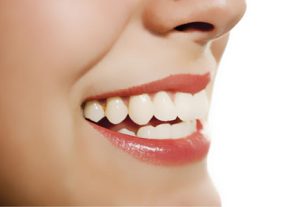The hair schedule is a treatment that involves hydration, nutrition and reconstruction of strands, and is recommended for all hair types, but especially for hair damaged by chemical treatments, pollution, water chlorine or solar radiation.
This treatment is carried out for a period of 30 days, with hydration, nutrition and reconstruction on different days, 3 times a week, allowing a period of at least 48 hours between the techniques used, in order to guarantee better results.
The hair schedule can be done at home, however, it is recommended to have guidance from a professional specialized in hair care, who can recommend specific products for each phase of the treatment, individually according to the characteristics of the hair.

What is it for
The hair schedule is indicated to hydrate, nourish and rebuild hair strands damaged by external factors, which include:
- Chemical treatments, such as dyes, straightening or permanent treatments;
- Chlorine in swimming pool water;
- Pollution;
- Aggression to the hair by UV rays from the sun;
- Frequent use of heat on the hair, such as a straightener or hairdryer.
The hair schedule helps to leave hair shinier, hydrated, with fewer split ends, and a more pleasant texture, and can be done for all hair types.
How to make
The hair schedule is made using three different techniques, which include:
1. Hydration
Hair hydration is the first step in the hair schedule, carried out with moisturizing masks, according to the characteristics of the hair, in order to make it more hydrated, less dry, shinier and softer.
Furthermore, hydration helps prevent the appearance of split ends and hair loss.
Products: coconut oil, Aloe Veraglycerin, elastin, D-Panthenol or vitamins A, B, B5 or E.
How to make: wet your hair and remove excess water, and depending on the product, you can apply it to dry hair. Apply the concentrated moisturizing mask strand by strand to your hair, leaving it to act for a few minutes, and then rinsing your hair with your usual shampoo and conditioner.
2. Nutrition
Nutrition is the second stage of the hair schedule, made with oils or butter, as they help to nourish the hair, leaving it healthier and frizz-free. Furthermore, this step seals the hair cuticle and enhances the effects of hair hydration.
This stage of the hair schedule can be done in different ways, using a fast-acting nutrition mask that contains some of the substances mentioned above, moisturizing with oils during the day, or moisturizing at night, in this case being recommended for very dry hair.
Products: oils, such as avocado oil, olive oil or castor oil, or butters, such as macadamia, coconut or argan butter, for example.
How to make: choose the form of nutrition you want and apply the product to your hair. In the case of the fast-acting nutrition mask, it should be used while showering, for 2 to 3 minutes and then rinsed. In the case of moisturizing with oils, you should apply the chosen oil or a mixture of oils to dry hair, leaving it to act for 30 minutes and rinse with your usual shampoo and conditioner.
In the case of nighttime wetting, the oil must be applied to the entire length of the hair, leaving it to act throughout the night, removing it the next morning. It is important to avoid applying the oil to the scalp.
3. Reconstruction
The third stage of the hair schedule is reconstruction, which is done with moisturizing masks that help rebuild the hair fiber by replacing proteins and lost hair mass, this stage being important especially for very damaged hair.
This stage of the hair schedule helps to make your hair more resistant, strong and elastic, as well as shinier, softer and healthier.
Products: keratin, collagen, arginine or creatine.
How to make: Apply the moisturizing mask strand by strand to your hair, leaving it to act for a few minutes, and then rinsing your hair with your usual shampoo and conditioner. This step can also be done in the salon with keratin in the hair cauterization treatment. See how hair cauterization is done.
How to identify hair needs
The hair schedule must be made according to the characteristics of the hair and what it needs to stay nourished.
A good way to know if your hair needs hydration, nutrition or reconstruction is to test the strand’s porosity, placing a strand of hair in a glass of water.
If the thread floats, it needs hydration, if it stays in the middle it means it needs nutrition and if it sinks it needs reconstruction. See more about the yarn porosity test.
Hair schedule table
The hair schedule must be done for 30 days, 3 times a week, respecting a period of at least 48 hours between the techniques used.
The following tables show some ways to create a hair schedule, according to the characteristics and needs of your hair:
Phase 1: When the hair is very damaged
Phase 2: When the hair is slightly damaged
For maintenance: when hair is healthy
According to the characteristics and needs of the hair, a schedule can be created, in which the hair must be washed 3 times a week, and each wash must be carried out with one of the treatments that improve the appearance of the hair.
How long to do the hair schedule
The hair schedule can be carried out for up to 6 months, being possible to stop for 1 month, where just use shampoo, conditioner and styling cream, if necessary, and then you can return to the schedule.
Some people don’t need to stop their schedule because their hair doesn’t feel heavy or oily. If this happens, you may need to change products and a hairdresser will be able to tell you what stage your hair is at and what schedule is best for your needs.
Ideally, the hydration schedule should be maintained for long periods because it is the best way to keep your hair beautiful and hydrated, with frizz-free strands or split ends. A good indication that the treatment is working is that you do not feel the need to cut your hair, not even the ends.
When results can be seen
Normally, in the first month of the hair schedule you can notice a good difference in your hair, which becomes much more beautiful, hydrated and frizz-free. However, when the hair is very damaged due to the use of chemicals such as progressive, relaxing or permanent, the best results can be seen in the second month of treatment.
Those who are going through the hair transition and no longer wish to straighten their hair artificially can take 6 to 8 months to get their hair completely hydrated and with good curl definition, without having to resort to chemical products. But this is only possible if, in addition to the schedule, there is daily hair care.

Sign up for our newsletter and stay up to date with exclusive news
that can transform your routine!
Warning: Undefined array key "title" in /home/storelat/public_html/wp-content/plugins/link-whisper-premium/templates/frontend/related-posts.php on line 12
Warning: Undefined array key "title_tag" in /home/storelat/public_html/wp-content/plugins/link-whisper-premium/templates/frontend/related-posts.php on line 13



